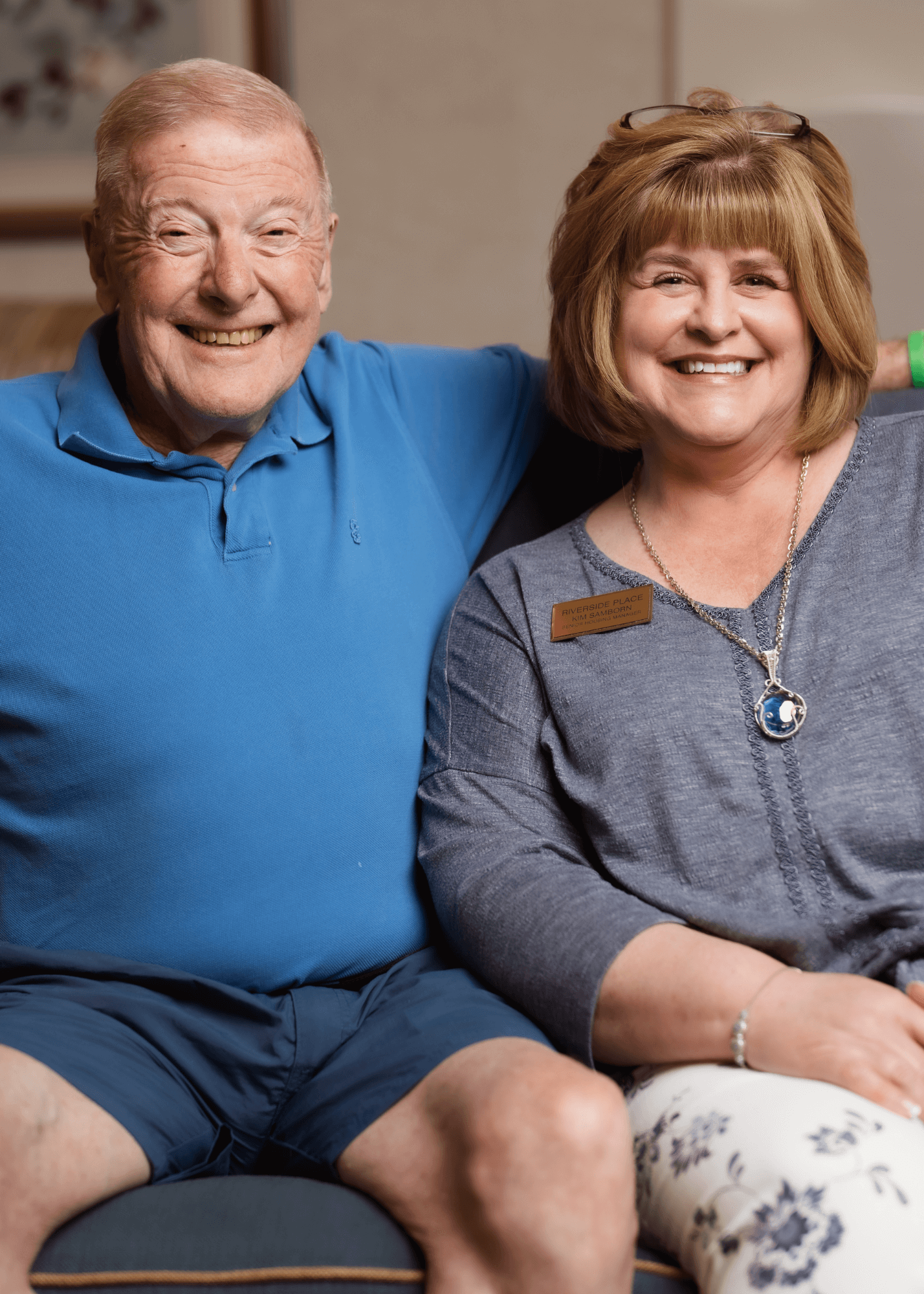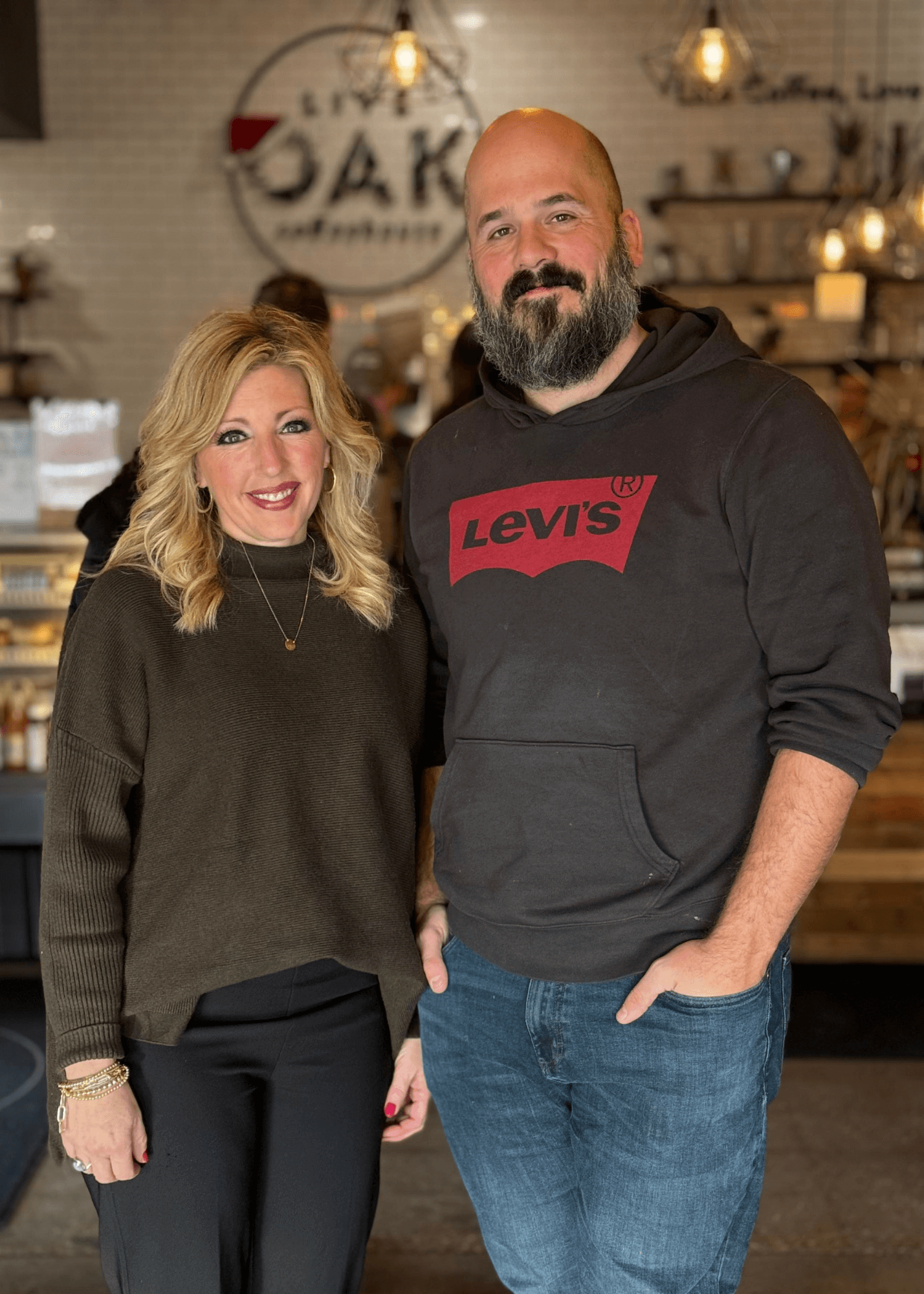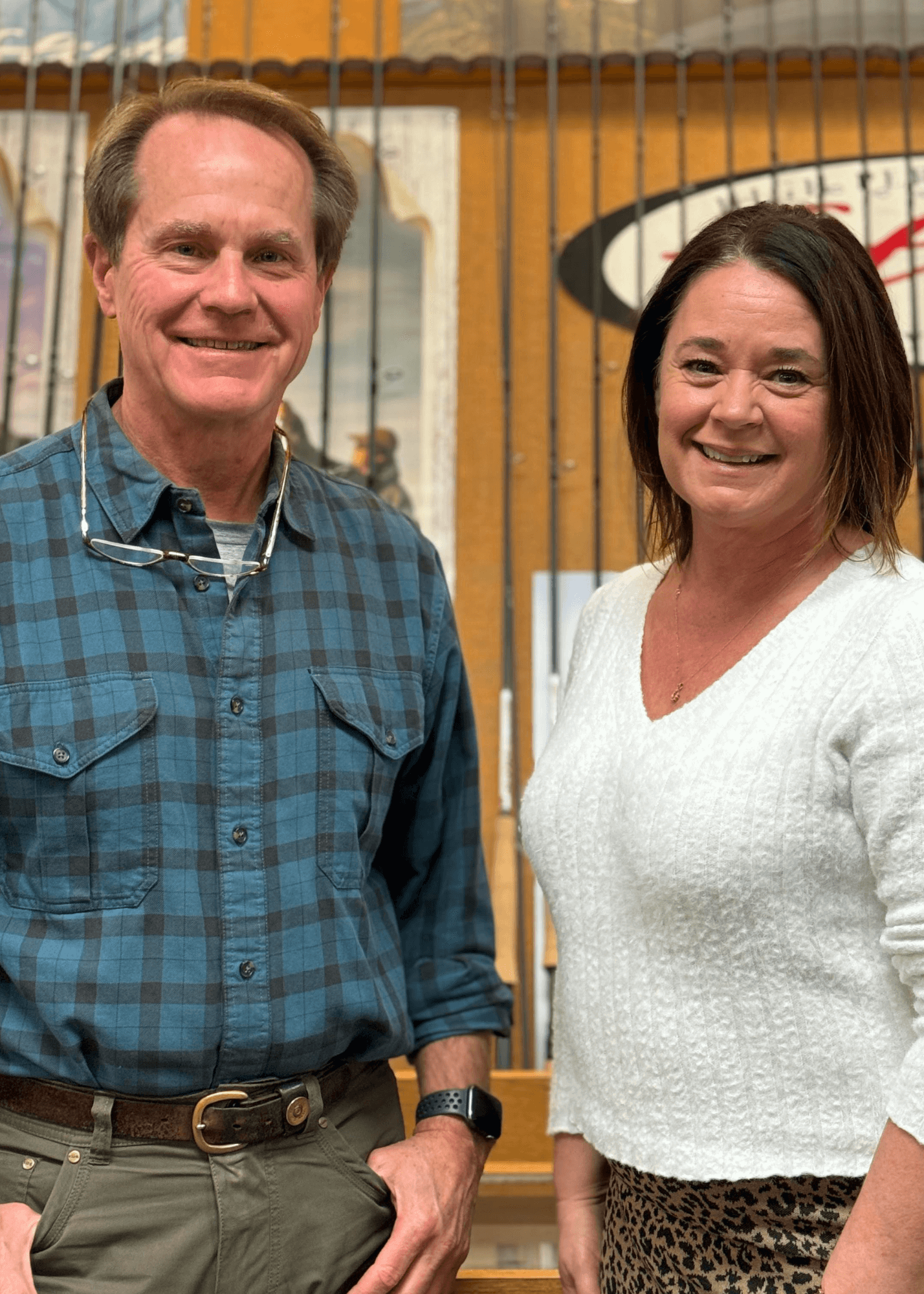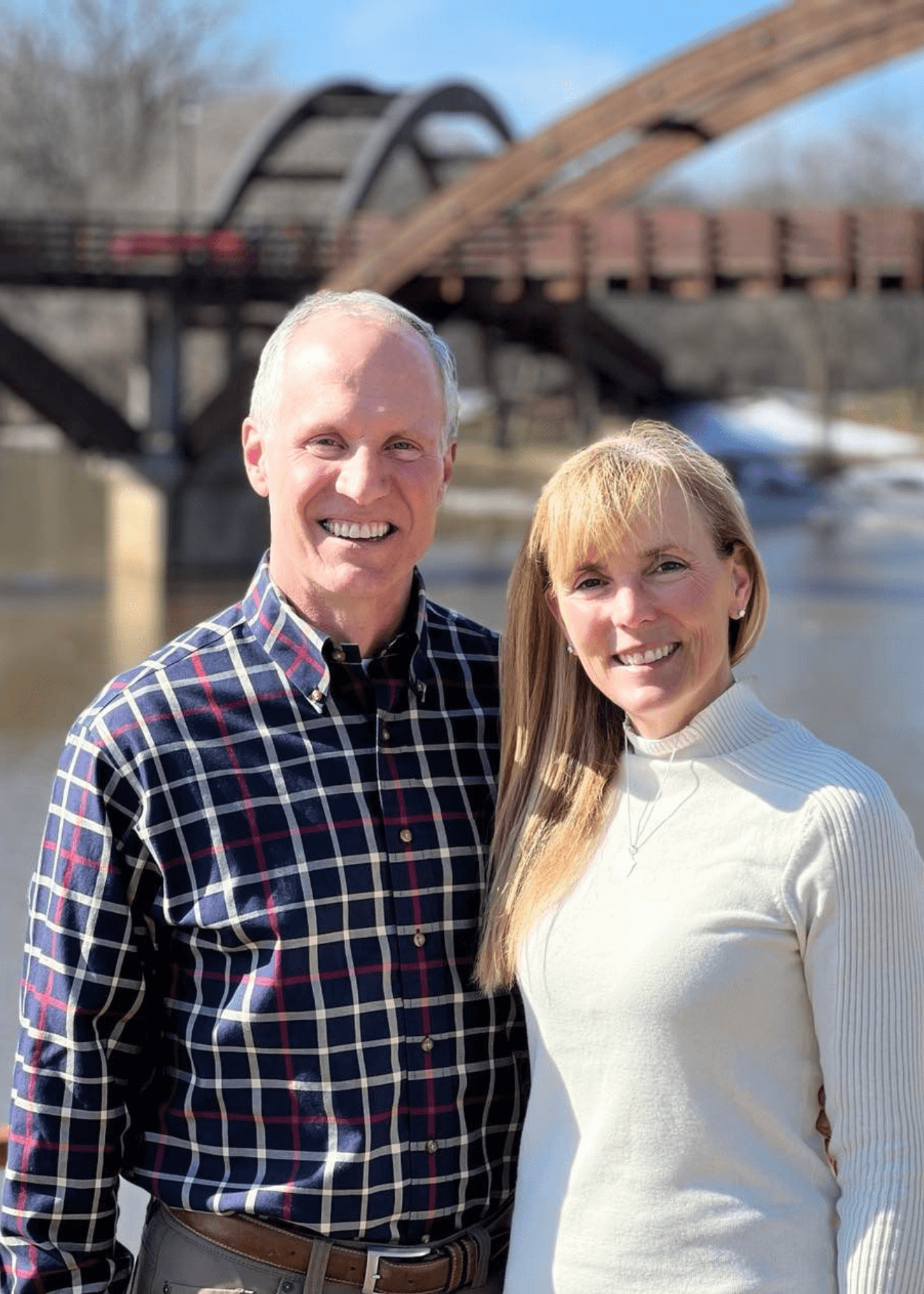Prologue: Endowment funds at your local community foundation play a crucial role in ensuring the long-term sustainability and impact of vital community initiatives. By establishing these funds, organizations like Riverside Place secure a lasting source of support for generations to come.
John Ruppel & Kim Samborn – In Their Own Words, Documented by Phil Eich
“My name is John Ruppel, and I’m the chairperson of the Riverside Place Endowment Committee. In July of 2000, seven residents of Riverside Place got together, did some talking, and decided they wanted to contribute to improving the lives of the people who lived–and would live–here. They pulled together some money, $7,000, which they invested as an endowment fund at the Midland Area Community. Today, that same fund is approaching $400,000.
It’s not a sad thing, but those of us who live here realize that most of us are going to die here. They’re gonna take us out feet first, so the mission of the fund is to provide for the enrichment and well-being of the residents of Riverside Place. Each year, we use portions of the fund at our pleasure in ways that the Endowment Fund Committee feels will benefit all of our residents.
We’re a special kind of committee. We’re made up of nine members selected from the residents, and we conduct our own affairs. You don’t have to know about finances, but you should know what your job is: to decide how to spend someone else’s money in the best way for all of us. It’s a good group.
I’ve been chairman for four years. When we need to elect new members to the committee, I try to select people that have a little bit of mule in ’em. I don’t want ‘yes, people’. I don’t want people to agree with everything I say. And at times, and Kim can verify this, meetings get a little boisterous. But we’re also a little bit like Las Vegas: what happens during the meeting stays in the meeting. When we walk out the door, everybody’s smiling and still happy with their neighbors. You can talk to them. That’s one of the reasons why I believe the committee has been working so well. Nine of us represent 150 people, and we’re spending money that doesn’t belong to me or just them: it belongs to everybody that lives here.
In the last four years that I’ve been on this committee, we’ve built the flow of information so that if you’re living here and you’ve got an idea, you can write it down and share it with us. We’ve got a form hanging on the bulletin board. Any community member will help you fill out the form. Then the idea is presented to the committee.
From there, we sort the ideas from what’s possible and what is not, what fits our mission and what does not, and then start discussing them. Often, I invite the resident who submitted the idea to come to the meeting to tell us why they think it’s a good idea.
A great example of this happened last year when a resident came to us and outlined a problem she saw—along with the solution.
At the rear entrance of our building, there are large carts for residents moving in. Well, you can imagine an old woman with her grandson trying to move these giant 6-foot carts, carts loaded down with grandma’s kitchen table and book collection, trying to push them down the hallway, around the corner, around another corridor, into an elevator, and up to grandma’s apartment.
It’s a difficult task, so a resident came to us and said, ‘I’d like to see smaller handcarts.’
The committee realized it was a good idea, so we voted for it. We spent around $500 to get two smaller handcarts from Home Depot, and to my knowledge, the two carts that came with the building 28 years ago are no longer in use. The smaller carts were a good investment that benefitted the residents.
You’ll notice the pergola sitting on the corner. That project was gosh darn near $25,000: another investment from the endowment fund. We’re currently sitting in another investment from the endowment fund, a room with tables and chairs and a fireplace that the residents can enjoy. I’ll show you our pool table and shuffleboard table upstairs. They make life more enjoyable and fun. We’re old folks who aren’t supposed to be jumping up and down, but at the annual shuffleboard table competition, we love it so much we do it, anyway.
These projects weren’t pocket change, but at the same time, the return on investment, the number of people using them, admiring them, sitting here in the wintertime by the warm fire, that’s neat and enriches the lives of the people who live here.
It’s a good place. It’s a safe place, and we’re talking about old folks now—we need to feel safe in the place we live. We’re not exactly mobile or able to do what we used to do, but we feel safe here. It’s clean. Everybody here watches out for each other.
It’s not sad at all. I mentioned earlier the fact of the matter is that most of us moving in here are going to be carried out. We, therefore, want to continue a feeling of comfort, safety, and friendship as we live out the last years of our lives.
I’m so proud to say that I’ve helped to contribute to that feeling in a place where we all help do that.”
Part 2:
“I am the Senior Housing Manager for the City of Midland. The city operates Riverside Place here in downtown, as well as Washington Woods, and both offer independent living for seniors 55 and over. We have 150 apartments at Riverside, 214 at Washington Woods, and we invite anyone 55 and older to put in an application and move into our community.
But we do more than just provide apartments for residents. Here at Riverside and Washington Woods, we are income-based, meaning that units can be rented at a discounted rate based on your income and assets. We do have market-rate renters, but even the market rent here is phenomenal, almost unheard-of, when compared to our competitors, especially when you consider the fact that we have nursing coordinators who help residents remain in place.
We call them coordinators because while they don’t do skilled nursing, they help arrange things like skilled nursing, home care, physical therapy, occupational therapy, you name it! They help residents get their blood pressure checked, their pulse, their weight, figuring out different medicines, help them contact the doctor if there’s confusion, and work with the families so that people do more than just survive here; they can actually thrive.
We also have a full maintenance team. They are on call 24/7, and we don’t outsource, which means the residents get to know the staff. We have our office assistant who does all the invoices in-house, so there’s a real person to talk to if there are any questions or issues.
Our activities coordinator packs a full calendar of events focused on peoples’ physical, intellectual, emotional, spiritual, purposeful, and social needs. We have a garden club. We have residents who run our library downstairs. We have a full Tenant Council that residents run with a president, vice president, treasurer, and secretary. They have meetings quarterly, and the president works with me directly on any issues or to implement any great ideas.
One of those great ideas happened in the year 2000. The residents who lived here got together and started fundraising for an endowment. Everyone donated. Since then, the seed money has grown to the point where the residents get about $15,000 to $18,000 a year in spendable income from that fund, and it’s the residents who get to decide how to spend that money to enrich their lives here. Our baby grand piano, our fish tank, brand-new patio furniture, the pergola outside, the pool table, and shuffleboard; all of those things were purchased by the residents and made possible by that fund. Contributions through the endowment fund were from people who wanted to leave a legacy, and they did: a long-term legacy that benefits the rest of us.
The city can’t take credit for that, and I can’t take credit for that: it was an idea completely developed by the residents. If the residents liked and cared enough about this place to do something like that, I knew I wanted to work here.
It’s pretty fantastic and special place, and it’s our residents who make it that way.”





